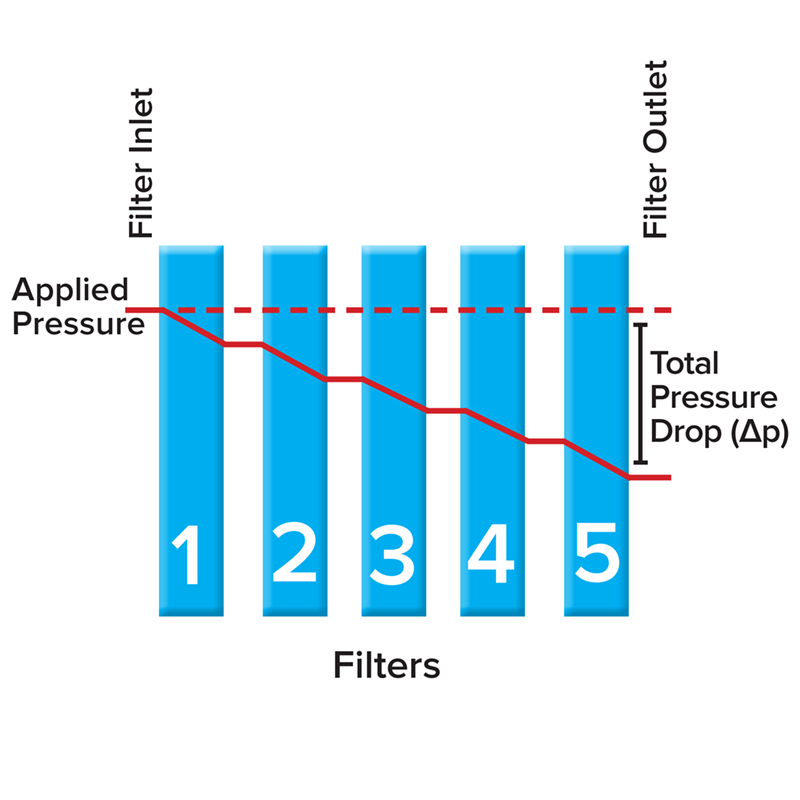
When particles of a known and defined size are removed via filtration, it is fairly easy to choose the right filter by simply selecting a pore size smaller than the particle. But what happens when you need to filter a very dirty solution that contains an innumerable amount of particle sizes? If a pore size too small is chosen, a cake layer of debris will form on the membrane surface and foul it completely. If too big of a pore size is selected, then a large portion of the solids will pass right through the filter. Because it could be easily overdone, it’s usually not a good idea to stack multiple filters in the same filter holder and process it all at once. So what is an effective solution to this problem?
Enter the world of pressure drop! Back in 1856, French hydrogeologist Henry Darcy figured out the physics behind fluid flow in a filter medium while he was working in Dijon, France (yes, also the little town that gave us great mustard). Henry figured out that in order to push a liquid through the filter, the forces applied at the inlet would not be the same at the outlet because of what was going on inside the filter. Through this, Henry discovered the forces of pressure drop.
Here is another way to describe pressure drop: If you have 1 liter of pond water and need to analyze for trace pharma compounds, you must first filter out dirt (>200um), algae (200-400um), fine sediment (10-100um), paramecium (50-300um), bacterium (0.2-5um), as well as the breakdown products of all these elements. If you stack a standard 0.2um filter on the bottom, then a 1.0um filter on that, followed by a 5.0, then 10.0um, and finally a 50 or 100um filter on top, you will have the cumulative pressure drop for each filter membrane and the combined effect of the captured particles. All those items above will quickly layer on top of each filter, causing a sharp increase in each membrane’s individual pressure drop (and particle capture efficiency) looking something like this:
If the combined pressure drop exceeds the applied inlet pressure, then no liquid will make it out of the end of the filter. If the pressure drop is close to the applied pressure, it means (at best) the filter run will run very slowly. In most applications, we suggest no more than 2 filters in a single pass in order to minimize the risk of encountering too much pressure drop. For this very approach, Sterlitech has a small extension device for the 47mm glass filter funnels, our product 311450 (please contact us for more details.
To gain the best possible filter runs, one should carefully consider the depth (distance) of the filter, the relative tortuosity (number of twists & turns each pore makes), relative particulate load, and temperature/viscosity of the fluid in question. These elements all play significant roles in defining the difference between pressure at the inlet vs. the outlet. However, the depth and tortuosity can have the greatest effect on the pressure drop, and therefore should be carefully considered.
If you need a little help in lining up both the right filters as well as the best operating conditions, so you can avoid the nefarious pitfalls of pressure drop, please contact one of the Technical Reps at Sterlitech. We will guide you through the benefits of each membrane type and configuration as it relates to your project!


![Join Sterlitech at BIO 2024 [Booth #5558]: Exploring the Future of Biotechnology](https://www.sterlitech.com/media/magefan_blog/b4.jpeg)

